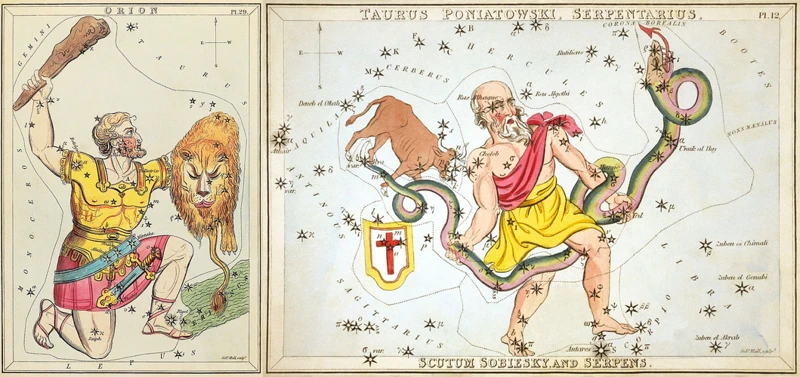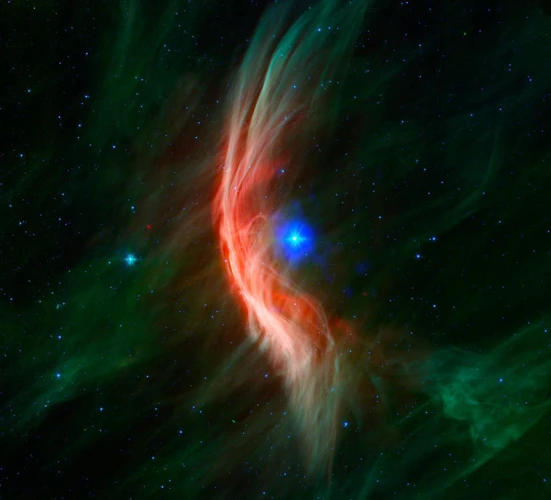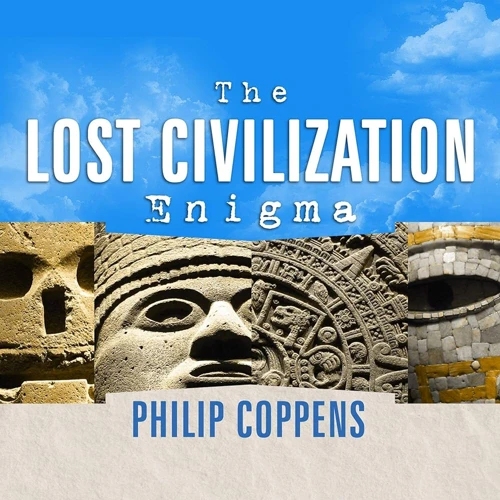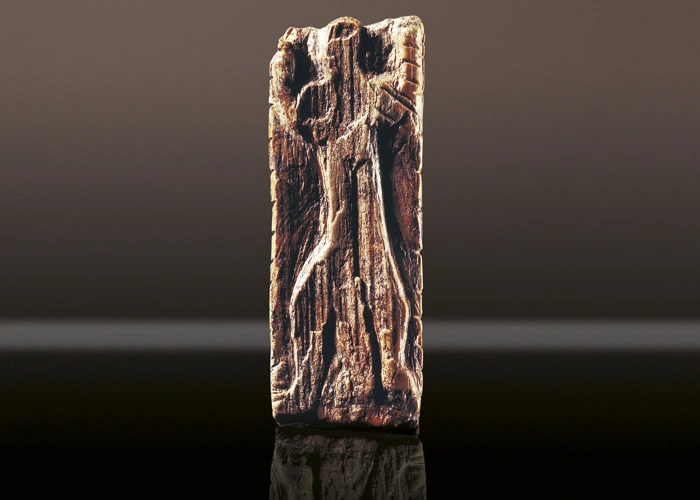When we look up at the night sky, one of the most prominent and enchanting sights is the Pleiades star cluster. Also known as the Seven Sisters, this cluster has captivated the imaginations of people across different societies throughout history. The cultural significance of the Pleiades goes far beyond its astronomical beauty. From ancient mythology and indigenous traditions to modern literature and New Age beliefs, the Pleiades has held a special place in the hearts and minds of many. In this article, we will explore the rich and diverse cultural importance of the Pleiades star cluster, delving into its role in ancient history, modern culture, indigenous societies, and contemporary beliefs. So, let’s embark on a journey through time and space to discover the profound significance of the Pleiades in various societies around the world.
Contents
- The Pleiades in Ancient History
- The Pleiades in Modern Culture
- The Pleiades in Indigenous Cultures
- The Pleiades in Contemporary Beliefs
- Conclusion
-
Frequently Asked Questions
- Why are the Pleiades called the Seven Sisters?
- Are the Pleiades visible from all parts of the world?
- Do the Pleiades have any scientific importance?
- What role did the Pleiades play in ancient Greek mythology?
- Are there any festivals or celebrations dedicated to the Pleiades?
- What does the Pleiades symbolize in Native American cultures?
- Are there any ancient civilizations that observed the Pleiades?
- What are the New Age beliefs associated with the Pleiades?
- Can the Pleiades be used for navigation?
- Are there any contemporary theories linking the Pleiades to extraterrestrial life?
- References
-
Frequently Asked Questions
- 1. What is the Pleiades star cluster?
- 2. How many stars are in the Pleiades?
- 3. Why is the Pleiades important in Greek mythology?
- 4. How do Native American cultures view the Pleiades?
- 5. Are there any famous works of literature or art inspired by the Pleiades?
- 6. What role does the Pleiades play in astrology and astronomy?
- 7. Are there any festivals or folklore associated with the Pleiades?
- 8. How do indigenous cultures incorporate the Pleiades into their creation stories?
- 9. What are “New Age movements” and their connection to the Pleiades?
- 10. Is there any scientific evidence supporting extraterrestrial connections to the Pleiades?
- References
- Read More
The Pleiades in Ancient History

Ancient history is filled with captivating tales and beliefs surrounding the Pleiades star cluster. In Greek mythology, the Pleiades were the seven daughters of the titan Atlas and the nymph Pleione. These beautiful sisters caught the attention of numerous gods and mortals, and their story became intertwined with various Greek legends. The Pleiades were said to be pursued by the hunter Orion, and Zeus turned them into stars to protect them. In Native American cultures, the Pleiades held significant value as well. For the Lakota Sioux, the cluster represented a group of seven maidens who became the stars as a result of fleeing from the relentless advances of an aggressive buffalo spirit. Across Asia, the Pleiades feature prominently in traditions such as Chinese and Japanese astronomy and astrology. The ancient Chinese believed that the cluster was linked to the longevity of the Emperor, while the Japanese associated it with the arrival of spring and the celebration of the Tanabata festival. The Pleiades had a powerful presence in ancient history, and their mythical and cultural importance continues to captivate our imaginations to this day. (Link: /rise-fall-minoan-civilization/)
The Pleiades in Greek Mythology
In Greek mythology, the Pleiades occupy a prominent position as a group of celestial beings. According to the myth, they were the seven daughters of Atlas, the titan who held up the heavens, and Pleione, an Oceanid nymph. The names of the Pleiades were Maia, Electra, Taygete, Alcyone, Celaeno, Sterope, and Merope, each associated with a different aspect of nature. These sisters caught the attention of gods and mortals alike. The most well-known story involving the Pleiades is their connection with Orion, the great hunter. Orion became infatuated with the sisters and relentlessly pursued them. To protect the Pleiades, Zeus intervened and transformed them into stars, placing them in the night sky. However, Orion too was immortalized as a constellation and forever positioned in close proximity to the Pleiades, symbolizing their eternal bond. This myth of pursuit and transformation serves as a cautionary tale and a reminder of the power and allure of the Pleiades. The Greek mythology surrounding the Pleiades offers a glimpse into ancient beliefs about the stars and their significance in human lives. (Link: /the-influence-of-sun-moon-aspects/)
The Pleiades in Native American Cultures
The Pleiades holds great significance in the cultures of Native Americans, where it is often revered as an important celestial entity. Among the Lakota Sioux people, the Pleiades are known as the ‘Seven Sisters’ or ‘Tiyopa Itawa.’ According to their mythology, the cluster represents seven maidens who fled from an aggressive buffalo spirit. These maidens were transformed into stars to protect them, providing guidance and protection for the Lakota people. In some Native American tribes, the Pleiades served as a seasonal marker, indicating the arrival of certain events. For example, the Hopi people of the American Southwest recognized the Pleiades as a symbol of the beginning of their planting season. The appearance of the Pleiades in the pre-dawn sky in May signaled the start of agricultural activities and the cultivation of crops. Additionally, various tribes associated the Pleiades with the changing seasons, using its position in the night sky to determine the appropriate time for hunting, fishing, and gathering. The Pleiades played a vital role in the spiritual and cultural practices of Native American tribes, influencing their traditions, agriculture, and way of life. (Link: /secrets-of-semi-sextiles/)
The Pleiades in Asian Traditions
In Asian traditions, the Pleiades hold a special place and are revered for their significance in various cultures. In Chinese astronomy and mythology, the Pleiades are known as the Seven Sisters or the Vermilion Bird. They are associated with the direction of the east and symbolize the arrival of spring. The Chinese believe that the stars in the Pleiades represent the seven celestial handmaidens who serve the Queen Mother of the West. Additionally, the Pleiades are linked to the longevity of the Emperor, as it is believed that when one star of the cluster disappears, it signifies the end of an Emperor’s reign.
Similarly, in Japanese folklore, the Pleiades are known as Subaru, which means “gathered together” or “united” in Japanese. The Subaru constellation represents the Seven Sisters, and it is believed that the stars hold the spirits of seven legendary siblings. The Pleiades are associated with the Tanabata festival, a celebration of two star-crossed lovers who can only meet once a year on the seventh day of the seventh lunar month. During this festival, people write their wishes on colorful strips of paper and hang them on bamboo trees, symbolizing the union of the stars Vega and Altair in the Milky Way, with the Pleiades watching over their love.
Across various Asian traditions, the Pleiades symbolize spring, new beginnings, and the cycle of life. Their presence in the night sky has inspired festivals, rituals, and artistic depictions throughout the ages. The cultural significance of the Pleiades in Asian traditions highlights the deep connection between the celestial realm and human life, emphasizing the importance of harmony, renewal, and the cyclical nature of the universe. The enduring belief in the power and influence of the Pleiades in Asian cultures continues to shine brightly to this day.
The Pleiades in Modern Culture

The Pleiades star cluster continues to leave its mark on modern culture, bridging the gap between ancient lore and contemporary artistic expressions. In literature and art, the Seven Sisters have inspired countless works. From the writings of renowned authors like Hesiod and Dante to paintings by masters such as Vincent van Gogh and Salvador Dalí, the Pleiades have been a subject of fascination, symbolizing beauty, mystery, and the eternal. In astronomy and astrology, the Pleiades hold significance as well. Their position in the night sky has been used as a navigational tool for seafarers, and in astrology, they are associated with luck, harmony, and creativity. The Pleiades also find their way into folklore and festivals around the world. In many cultures, the cluster marks the beginning of agricultural seasons and is celebrated with lively rituals and festivities. Whether in the realms of art, astronomy, or folklore, the modern cultural significance of the Pleiades resonates deeply, paying homage to its enduring allure.
The Pleiades in Literature and Art
The Pleiades star cluster has left an indelible mark on the world of literature and art. Countless writers and artists have drawn inspiration from its celestial beauty and mythical associations. In literature, the Pleiades have been featured in numerous works across different cultures and genres. In Greek literature, the epic poem “The Iliad” by Homer includes a mention of the Pleiades, describing them as a sign of the arrival of summer. The Pleiades also make appearances in the works of famous poets such as Lord Tennyson and William Shakespeare. Their ethereal presence has been used to convey themes of beauty, celestial navigation, and the passage of time. In art, the Pleiades have been depicted in various mediums throughout history. Ancient Greek pottery often featured the Pleiades symbolically, representing femininity, beauty, and divine protection. In Renaissance art, the Pleiades were frequently portrayed in celestial maps and allegorical paintings. They have also been a popular subject in contemporary artwork, with artists exploring their mythological significance and cosmic allure. Literature and art have served as powerful mediums for celebrating and exploring the cultural significance of the Pleiades, immortalizing their mystique for generations to come.
The Pleiades in Astrology and Astronomy
The Pleiades star cluster has long been a subject of fascination and interest in both astrology and astronomy. In astrology, the Pleiades are associated with qualities such as brilliance, inspiration, and spiritual energy. They are considered a source of celestial power and influence, with the ability to bring positive change and transformation. Astrologers believe that those born under the influence of the Pleiades may possess heightened intuition and creative abilities. In the field of astronomy, the Pleiades is a remarkable cluster consisting of hundreds of stars, though only a handful are visible to the naked eye. These stars are relatively young, with an estimated age of about 100 million years. Astronomers study the Pleiades to better understand stellar evolution and the formation of star clusters. The cluster’s proximity to Earth makes it an ideal target for observation and research. Additionally, the Pleiades have served as intriguing subjects in astronomical photography, with their ethereal beauty captured in stunning images. Whether through the lens of astrology or the lens of astronomy, the Pleiades continue to captivate our imagination and inspire further exploration of the cosmos.
The Pleiades in Folklore and Festivals
The Pleiades star cluster has long been a source of inspiration for folklore and a focal point in festivals held by various cultures. In Greek folklore, the Pleiades were associated with agricultural rituals and the arrival of spring. Farmers would perform ceremonies and offerings to ensure a bountiful harvest, as they believed the appearance of the Pleiades marked the beginning of the planting season. In Japan, the Pleiades are linked to the Tanabata festival, celebrated on the 7th day of the 7th month. According to folklore, two star-crossed lovers, represented by the stars Vega and Altair, are only allowed to meet once a year on this day when a bridge of magpies forms across the Milky Way. The Pleiades, known as Subaru in Japan, play a significant role in this festival, symbolizing the celestial guide for the lovers. In indigenous cultures, the Pleiades feature in various festivals and ceremonies. For the Maori people of New Zealand, the cluster is known as Matariki and is celebrated with feasts, dances, and the lighting of bonfires to bring in the new year. In the Americas, the Pleiades is associated with the changing of seasons and is honored in festivals such as the Hopi’s Soyaluna, a winter solstice ceremony, and the Lakota’s Powwow, which pays homage to the connection between the Pleiades and the renewal of life. Across the globe, the Pleiades continue to captivate hearts and inspire cultural celebrations, solidifying their significance in folklore and festivals.
The Pleiades in Indigenous Cultures

Indigenous cultures have embedded the Pleiades star cluster into their traditions and ways of life for centuries. One notable aspect is the Pleiades’ role as a seasonal marker. For example, among the Dakota Sioux tribes, the rising of the Pleiades signaled the start of the new year and the time to begin preparing the fields for planting. In Maori culture, the Pleiades, known as Matariki, marked the beginning of the agricultural year and was a time for feasting and celebration. Indigenous creation stories often feature the Pleiades as well. In Australian Aboriginal Dreamtime tales, the cluster is known as the Seven Sisters and is associated with a group of women who were pursued across the sky by a powerful man. The Pleiades also hold great significance in rituals and ceremonies. For many Native American tribes, the Pleiades are seen as a celestial council of ancestors, guiding and protecting their communities. So, the Pleiades not only serve as celestial markers but are deeply intertwined with the cultural fabric of indigenous societies, connecting them to their past, present, and future.
The Pleiades as a Seasonal Marker
The Pleiades star cluster has long served as a significant seasonal marker in various indigenous cultures across the globe. For many societies, the appearance and disappearance of the Pleiades in the night sky signaled the arrival or departure of specific seasons, marking important changes in weather, agricultural cycles, and celestial events.
In ancient Greece, the rising of the Pleiades before sunrise in May was associated with the onset of spring and the planting season. This celestial event was a signal for farmers to begin preparing their fields and sowing their crops. Conversely, the disappearance of the Pleiades from the night sky in October marked the arrival of winter and the time for harvest and preparation for the colder months ahead.
In Native American traditions, the Pleiades played a crucial role as a seasonal guide. For the Hopi tribe in North America, the cluster’s appearance in the pre-dawn sky in late autumn signaled the start of the katsina (spirit) season. This period was marked by various ceremonial dances and rituals, as well as the preparation of fields for the upcoming planting season.
Similarly, the Maori people of New Zealand used the Pleiades, known as Matariki, as a seasonal marker. The cluster’s rising in late May or early June marked the beginning of the Maori New Year. This was a time of reflection, remembrance, and festivity, as communities gathered to celebrate and honor their ancestors.
In Australian Aboriginal cultures, the Pleiades are associated with the onset of the dry season. The appearance of the cluster in the pre-dawn sky in April or May signaled a shift from the wet monsoon season to a time of more favorable conditions for hunting, gathering, and ceremonial activities.
The Pleiades’ role as a seasonal marker showcases the deep connection between the celestial realm and the natural world in these indigenous cultures. By observing the movements of the Pleiades, they were able to navigate their daily lives, make important decisions regarding agricultural activities, and celebrate the cycles of nature. The enduring significance of the Pleiades as a seasonal marker highlights the profound understanding these societies had of the celestial rhythms and their harmonious relationship with the Earth.
The Pleiades in Creation Stories
The Pleiades holds a significant role in the creation stories of many indigenous cultures. These ancient tales often attribute the origins of life and the universe to the celestial presence of the Pleiades star cluster. In the creation stories of the Australian Aboriginal people, the Pleiades are known as the Seven Sisters, and their arrival on Earth marks the beginning of humanity. According to the Anangu people of Central Australia, the Pleiades are associated with the creation of Uluru, the sacred rock formation that holds immense spiritual importance. The Hopi people of North America also have a creation story involving the Pleiades. They believe that the first human beings descended from the stars and that the Hopi tribe is the offspring of these celestial ancestors. In Greek mythology, the Pleiades were the daughters of the titan Atlas and Pleione, and their transformation into stars was part of their immortalization in the heavens. Across different cultures and continents, the Pleiades stand as a symbol of creation, the connection between the cosmos and humanity, and the origins of life itself. Their presence in creation stories highlights their enduring cultural importance and the universal fascination with the mysteries of the universe.
The Pleiades in Rituals and Ceremonies
The Pleiades star cluster has played a significant role in rituals and ceremonies across various indigenous cultures throughout history. These celestial beings have been seen as divine entities, guiding forces, and markers of important transitions in the natural world. In the mythology of the Maori people of New Zealand, the Pleiades, known as “Matariki,” is associated with the beginning of the agricultural year. When Matariki rises, it signals the start of the Maori New Year and is celebrated with feasts, storytelling, and performances to honor the land and seek blessings for the upcoming harvest season.
In the traditions of the Hopi Native Americans, the Pleiades hold immense spiritual importance, representing the place from which their ancestors originated. The “Wuhu Kachina” ceremony is a sacred ritual performed by the Hopi tribe to honor the Pleiades. During this ceremony, dancers adorned in elaborate masks and costumes perform intricate movements to connect with their ancestors and seek their guidance for a bountiful harvest, fertility, and overall well-being.
In the Dogon culture of Mali, West Africa, the Pleiades, called “Binu,” is believed to be the origin of life. They consider this star cluster to be the home of their ancestors who have transformed into spiritual beings. The Dogon people hold a complex and elaborate “Sigui” ceremony every sixty years to celebrate the alignment of the Pleiades with the sun. This ceremony lasts for several months and includes various rituals, dances, and sacrifices with the aim of appeasing the spirits and ensuring the continuity of life.
Among the Ainu people of Japan, the Pleiades, referred to as “Remu,” are associated with harvest rituals. During the “Iyomante” ceremony, held at the end of each winter, the Ainu pray for a successful harvest and express gratitude to the spirits. The villagers gather around a fire, offering food, sake, and prayers to honor their ancestors and the kindly spirits residing in the Pleiades.
These examples highlight just a few of the countless rituals and ceremonies where the Pleiades has played a vital role. Across different cultures, the Pleiades is revered as a celestial guide, a source of spiritual connection, and a symbol of renewal and abundance. The rituals and ceremonies associated with the Pleiades serve as a way for communities to maintain cultural traditions, express gratitude, seek blessings, and strengthen their bond with the cosmos.
The Pleiades in Contemporary Beliefs

In contemporary times, the Pleiades star cluster continues to hold a special place in various belief systems and ideologies. One notable association is with the New Age movement, where the Pleiadians are believed to be a group of extraterrestrial beings who bring spiritual wisdom and guidance to Earth. Followers of this belief claim that they have received messages and teachings from the Pleiadians, which they use for personal growth and transformation. Additionally, the Pleiades are often regarded as galactic ancestors, with some groups considering themselves as descendants of these celestial beings. The connection to extraterrestrial life doesn’t end there, as the Pleiades have also been associated with claims of extraterrestrial visitations and encounters. Some UFO enthusiasts and conspiracy theorists believe that the Pleiades serve as a hub for alien activity, and that these beings have been monitoring and influencing humanity for centuries. These contemporary beliefs demonstrate the enduring allure and fascination that the Pleiades continue to hold in our modern world.
New Age Movements and the Pleiadians
New Age Movements and the Pleiadians have become intertwined in contemporary beliefs and spiritual practices. The New Age movement, characterized by its emphasis on spirituality, personal growth, and alternative beliefs, has embraced the notion of Pleiadian beings as enlightened entities from the Pleiades star cluster. According to followers of this belief system, the Pleiadians are said to be advanced extraterrestrial beings who have a deep connection with Earth and humanity. They are often described as wise guides, offering insights and teachings to assist humanity in its spiritual evolution. The Pleiadians are believed to communicate with humans through channeling, where individuals act as intermediaries to relay messages from these celestial beings. Their messages focus on themes of love, unity, and raising consciousness. Devotees of the New Age movement often seek wisdom and guidance from these Pleiadian teachings, incorporating them into their spiritual practices and personal beliefs. It is important to recognize that these beliefs are highly subjective and vary widely among individuals who follow New Age philosophies. The integration of the Pleiadians within the New Age movement reflects the adaptability and openness of this spiritual movement to incorporate diverse sources of inspiration (Reference: /the-influence-of-sun-moon-aspects/).
The Pleiades as Galactic Ancestors
The idea of the Pleiades as galactic ancestors is a concept that has gained popularity in contemporary beliefs and New Age movements. According to this belief, beings from the Pleiades star cluster are said to have played a significant role in the creation and development of humanity. They are often depicted as highly advanced and benevolent beings who have a deep connection with Earth and its civilizations. Some proponents of this belief claim that these Pleiadian beings have been visiting Earth for thousands of years, imparting wisdom and guidance to humanity. They are believed to have influenced various aspects of human culture, including spiritual teachings, technological advancements, and artistic inspiration. The Pleiades are often associated with concepts such as ascension, enlightenment, and spiritual evolution. Proponents of this belief also suggest that certain individuals on Earth have a special connection or lineage with the Pleiades, referring to themselves as “Starseeds” or “Pleiadian souls.” While this belief is not widely accepted in mainstream science or astronomy, it has gained a following among those seeking a deeper understanding of the universe and humanity’s place within it. The notion of the Pleiades as galactic ancestors represents a modern interpretation of the star cluster’s significance and highlights the ongoing fascination with its celestial beauty and potential cosmic connections.
The Pleiades and Extraterrestrial Connections
The Pleiades star cluster has often been associated with extraterrestrial connections, inspiring a range of beliefs and theories. Many individuals who subscribe to New Age movements view the Pleiades as home to an advanced extraterrestrial civilization known as the Pleiadians. According to these beliefs, the Pleiadians are seen as benevolent beings who have a deep spiritual connection with Earth and its inhabitants. It is believed by some that these beings have been visiting and influencing humanity’s development for thousands of years, sharing their wisdom and guidance. This connection is often linked to the idea of human beings having extraterrestrial origins and being descendants of the Pleiadians themselves. Additionally, some UFO enthusiasts claim that the Pleiades cluster is a prime location for extraterrestrial visitations and encounters. They argue that the high number of reported sightings and encounters near the Pleiades indicates a strong extraterrestrial presence in that region of the universe. However, it is important to note that these claims are not backed by scientific evidence and are considered pseudoscience by mainstream academia and the scientific community. Nevertheless, the notion of extraterrestrial connections to the Pleiades continues to capture the fascination and intrigue of many individuals. (Link: /the-influence-of-sun-moon-aspects/)
Conclusion

In conclusion, the Pleiades star cluster holds immense cultural importance in different societies throughout history and across the globe. From the ancient Greeks and their mythical tales to the Native American cultures with their own unique interpretations, the Pleiades have left a lasting impact on human imagination and belief systems. In modern culture, the Pleiades continue to inspire artists, writers, and astronomers alike. They are often featured in literature and art, symbolizing beauty, spirituality, and a connection to the cosmos. Astrologically, the Pleiades are believed to possess special energies and influences, attracting attention from those who seek guidance and enlightenment. In indigenous cultures, the Pleiades serve as seasonal markers, signaling the times for planting, harvesting, and conducting sacred rituals and ceremonies. Contemporary beliefs have also embraced the Pleiades, with New Age movements connecting them to galactic ancestors and extraterrestrial beings. While scientific understandings may demystify the Pleiades’ celestial origins, their cultural significance continues to thrive as they remain embedded in our stories, traditions, and spiritual practices. The Pleiades star cluster stands as a testament to the human fascination with the universe and our enduring quest for meaning and connection within it.
Frequently Asked Questions

Why are the Pleiades called the Seven Sisters?
The Pleiades star cluster is often referred to as the Seven Sisters because, to the naked eye, seven stars are easily visible within the cluster. These stars have been given individual names and hold significant cultural and mythological importance in various societies.
Are the Pleiades visible from all parts of the world?
Yes, the Pleiades can be seen from different parts of the world. However, their visibility may vary based on the location and time of year. In some regions, they may be more easily observed during certain seasons or times of the night.
Do the Pleiades have any scientific importance?
Yes, the Pleiades have scientific significance as well. Astronomers study the cluster to better understand stellar evolution, star formation, and other astrophysical phenomena. It serves as a valuable research subject in the field of astronomy.
What role did the Pleiades play in ancient Greek mythology?
In ancient Greek mythology, the Pleiades were the seven daughters of Atlas and Pleione. They were pursued by the hunter Orion until Zeus transformed them into stars to protect them. Their story became intertwined with various Greek legends and played a significant role in ancient mythology.
Are there any festivals or celebrations dedicated to the Pleiades?
Yes, the Pleiades are celebrated in several festivals and cultural traditions around the world. For example, the Tanabata festival in Japan is dedicated to the star cluster. In Greek mythology, the Pleiades are associated with the festival of Plynteria, which was held in Athens.
What does the Pleiades symbolize in Native American cultures?
In Native American cultures, the Pleiades hold different symbolic meanings. For the Lakota Sioux, the cluster represents a group of seven maidens who became stars to escape from the advances of a buffalo spirit. It symbolizes protection, guidance, and the interconnectedness of nature.
Are there any ancient civilizations that observed the Pleiades?
Ancient civilizations across different regions, such as the Greeks, Chinese, and Native Americans, observed and recognized the Pleiades. They integrated the star cluster into their mythologies, rituals, and agricultural calendars, highlighting its importance in their societies.
What are the New Age beliefs associated with the Pleiades?
Some New Age movements and beliefs center around the Pleiades. Followers of these beliefs often consider the Pleiades as the home of advanced extraterrestrial beings or spiritual guides. They believe in a connection between humanity and these beings for guidance and spiritual development.
Yes, the Pleiades can be used for navigation purposes. In the Northern Hemisphere, they are often used as a seasonal marker, indicating the changing of seasons and helping to determine the time of year. In the Southern Hemisphere, they are not as visibly prominent for navigation.
Are there any contemporary theories linking the Pleiades to extraterrestrial life?
While there are some theories and beliefs that suggest a connection between the Pleiades and extraterrestrial life, these remain speculative and have not been scientifically proven. These theories often originate from New Age beliefs and are not widely accepted in the scientific community.
References
Frequently Asked Questions

1. What is the Pleiades star cluster?
The Pleiades star cluster, also known as the Seven Sisters, is a group of stars located in the constellation of Taurus. It is one of the closest star clusters visible to the naked eye.
2. How many stars are in the Pleiades?
The Pleiades cluster is composed of several hundred stars, although only a handful are easily visible without the aid of a telescope.
3. Why is the Pleiades important in Greek mythology?
In Greek mythology, the Pleiades were believed to be the seven daughters of the titan Atlas and the sea-nymph Pleione. They were pursued by Orion and were eventually transformed into stars to escape his advances.
4. How do Native American cultures view the Pleiades?
Many Native American cultures see the Pleiades as an important celestial phenomenon. They often use the cluster for seasonal markers, such as signaling the arrival of the winter solstice or the start of the planting season.
5. Are there any famous works of literature or art inspired by the Pleiades?
Yes, the Pleiades have been a source of inspiration for many artists and writers throughout history. One notable example is the painting “The Pleiades” by the French artist Elihu Vedder.
6. What role does the Pleiades play in astrology and astronomy?
Astrologically, the Pleiades are associated with themes of creativity, intuition, and illumination. From an astronomical standpoint, they are a young cluster of stars that provide valuable insights into stellar evolution.
7. Are there any festivals or folklore associated with the Pleiades?
Yes, various cultures celebrate the Pleiades through festivals and folklore. For example, the Japanese Tanabata festival is often linked to the star cluster, and the Maori people of New Zealand have rich traditions surrounding the Pleiades.
8. How do indigenous cultures incorporate the Pleiades into their creation stories?
In many indigenous cultures, the Pleiades feature prominently in creation stories. They are often seen as the birthplace of celestial or earthly beings, symbolizing the origins of life and the interconnectedness of all things.
9. What are “New Age movements” and their connection to the Pleiades?
New Age movements are a diverse collection of spiritual beliefs and practices that emerged in the 20th century. Some followers of these movements believe in the existence of extraterrestrial beings from the Pleiades, who they consider to be spiritual guides or ancestors.
10. Is there any scientific evidence supporting extraterrestrial connections to the Pleiades?
While there is no scientific evidence directly supporting the existence of extraterrestrial connections to the Pleiades, the concept has gained popularity in certain communities. However, it is important to note that these beliefs fall outside of mainstream scientific understanding.







